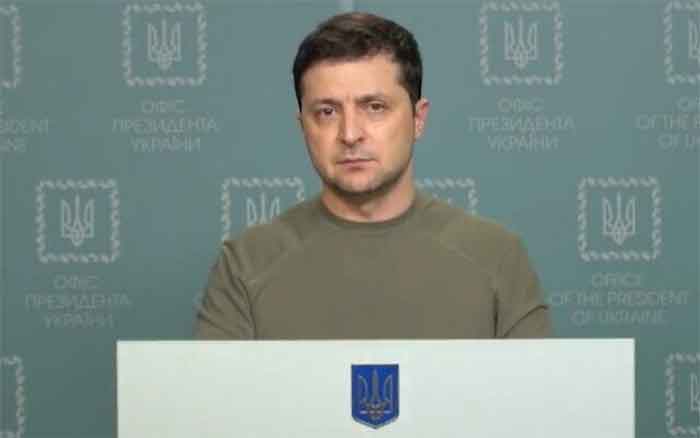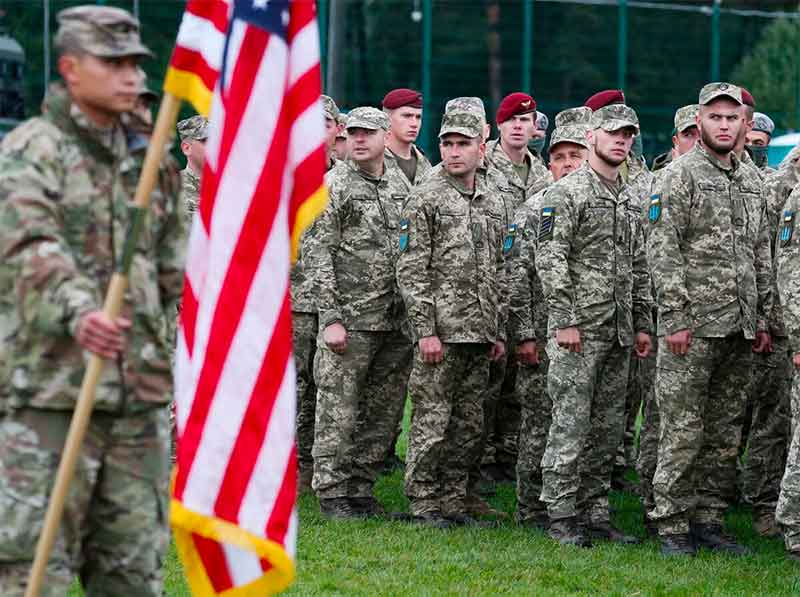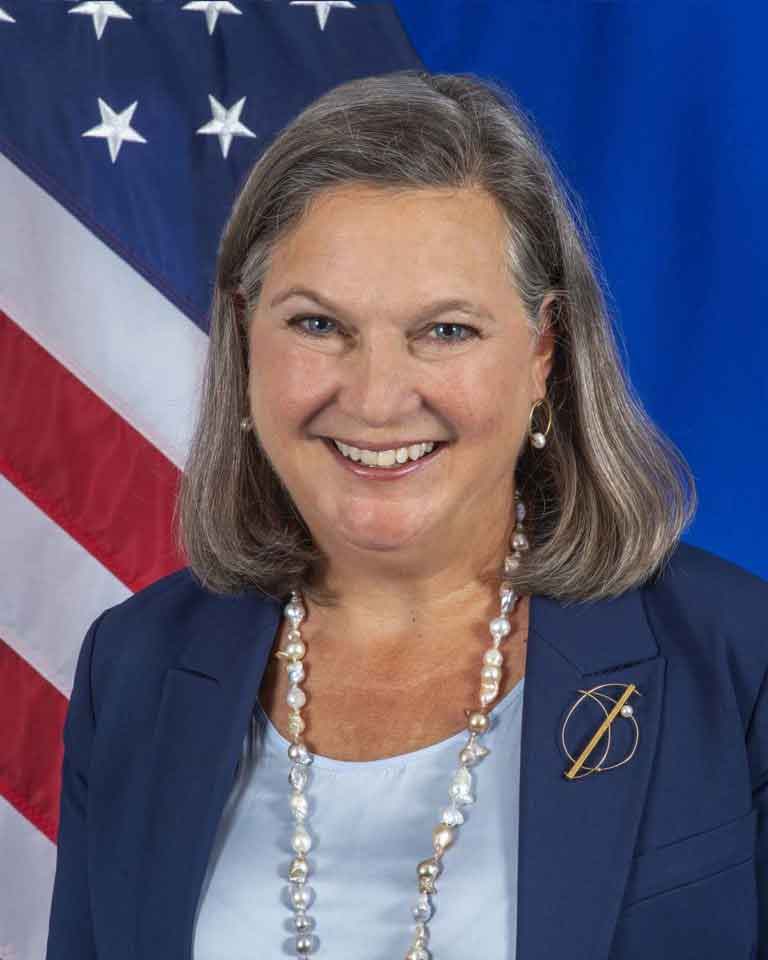
Ukrainian President Vladimir Zelensky said in an interview published on Thursday: Ukraine has no choice but to fight for the 1991 borders, because the world failed to guarantee its security and Ukraine alone is paying the price of the conflict.
The Economist spoke with Zelensky on December 8, but published an edited transcript only a week later.
Just two days prior to the interview, US Secretary of State Antony Blinken said a ceasefire based on current frontlines would be a “phony peace” and that Washington will back Kiev whatever it decides to do and how.
Asked about Blinken’s phrasing – “take back territory that has been seized from it since February 24” – Zelensky told the UK-based outlet that he actually want to restore the original borders of his country, including Crimea and all of Donbass.
“This is how it should end because otherwise it is not finished, it is just frozen. Just to leave it as it is now, to say, OK, let’s stop and they take Donbas, the south of our country, or part of it, and Crimea remains with them. Why? We will not be able to, no one would forgive it,” he said
Freezing the war, he said, means the Russians would get time to “become more powerful occupiers, ready for more occupation, and that is all.”
Restoring things to where they were on February 23 is impossible, Zelensky argued to The Economist, “because no one understands what security guarantees mean.” The Budapest Memorandum, he argued, meant “the whole world” would come to Ukraine’s rescue.
“But the whole world has not come, as we have seen. We gave away nuclear weapons, exchanged them for security guarantees. Did those guarantees work? No,” Zelensky said.
The Ukrainian President said: “Why is Ukraine paying such a high price? We are grateful to our supporters, but we are the ones who are paying.”
According to Zelensky, the fighting will end only when the entire world sides with Ukraine and forces Russia to withdraw to the 1991 borders, as well as pay reparations “for generations.” He also said he wanted to see regime change in Moscow by the “good Russians,” but that after February 24 “everyone is guilty.”
War Costs Rises, U.S. Braces Allies
The U.S. is reportedly bracing its European allies for “worst-case-scenarios” in Ukraine, suggesting that Kiev may need its donors to pony up an additional $2 billion a month as Russian attacks on key infrastructure cripple the former Soviet republic’s economy.
The cost warning reflects fears that Ukraine’s economy may contract by an additional 5-9% in 2023 after taking a 33% hit this year, the Washington Post reported on Thursday. There are also concerns that if Moscow’s attacks intensify, a surge in refugees fleeing the country could crash Ukraine’s currency, leaving the government in a “doomsday scenario” in which it cannot pay for critical imports or meet its foreign debt obligations.
“What do you do when you cannot heat your house, you cannot run your shops, factories or plants, and your economy is not working?” Oleg Ustenko, an economic adviser to President Vladimir Zelensky, told the Post. “We are going to be requiring more financial assistance, and Putin is doing this to destroy unity among allies.”
Zelensky’s government was already expecting to need at least $55 billion in foreign financial aid next year to meet basic expenses, the Post said. An extra $2 billion monthly would push that total to $79 billion. To put that in perspective, Ukraine’s entire state budget was less than $48 billion in 2021.
So far, the U.S. and the EU have pledged to send more than $30 billion to Ukraine next year, not counting the massive military aid that they’re also providing. Beyond the additional government funding that Kiev will seek, advisers to Zelensky have weighed asking Western leaders to finance direct cash payments to Ukrainian citizens, at a cost of $12 billion, the Post said.
Jacob Kirkegaard, a senior fellow at the German Marshall Fund think tank in Washington, argued that the West needs to give more money to keep Zelensky’s government financially afloat. However, he added, “I do not know if the will is there.”
Russians Have Adapted To U.S.-made HIMARS Systems, Says Ukrainian General
Russia has adjusted its tactics in Ukraine and adapted to the Western-supplied weaponry Kiev uses, including US-made HIMARS multiple rocket launchers, Ukraine’s top military commander General Valery Zaluzhny told The Economist, in an interview published Thursday.
“Russian mobilization has worked. It is not true that their problems are so dire that these people will not fight. They will. A tsar tells them to go to war, and they go to war,” Zaluzhny stated, claiming that while Russian soldiers “may not be that well equipped,” they still “present a problem for us.”He added that he had “no doubt” Moscow would attempt a new push toward the capital city, Kiev.
The general also claimed that Moscow has tweaked its tactics in the ongoing conflict, adapting to the weaponry used against it. “They have gone to a distance the HIMARS cannot reach. And we have not got anything longer-range,” Zaluzhny explained, echoing the repeated demands from Kiev to its Western backers to supply it with longer-range munitions. The military chief did not elaborate on where exactly the Russian troops had purportedly “gone” to be out of reach of HIMARS systems.
The commander also bemoaned the ramped-up missile attacks launched by Moscow against critical Ukrainian infrastructure. At the same time, however, he claimed Ukrainian air defenses have been demonstrating very high interception ratios.
“Now we have a ratio of 0.76 of downing missiles. Russians are using this 0.76 coefficient of efficacy when they plan their attacks. This means that instead of 76 missiles, they launch 100. And 24 get through and reach their target. And what do two missiles do to a power station? It would not work for two years. So it has to be built up,” Zaluzhny explained.
The infrastructure bombing campaign came in the aftermath of the Crimean Bridge attack, widely cheered by top Ukrainian officials and blamed by Moscow on Kiev’s intelligence services. The attacks have now left the country’s energy system “on the edge,” and its collapse will take a heavy toll on the troops as well, Zaluzhny asserted.
“In my personal opinion, I am not an energy expert but it seems to me we are on the edge. We are balancing on a fine line. And if the power grid is destroyed that is when soldiers’ wives and children start freezing. And such a scenario is possible. What kind of mood the fighters will be in, can you imagine? Without water, light and heat, can we talk about preparing reserves to keep fighting?” he wondered.
Still, Ukrainians are ready to continue fighting, Zaluzhny insisted, adding that he was firm in his “religious” belief that “Russians and any other enemies must be killed, just killed, and most importantly, we should not be afraid to do it.”
Germany’s Half-a-trillion Dollar Energy Bill Is Not Enough
A Reuters report — “Germany’s half-a-trillion dollar energy bazooka may not be enough” — said on December 15:
Germany is bleeding cash to keep the lights on. Almost half a trillion dollars, and counting, since the Ukraine war jolted it into an energy crisis nine months ago.
That is the cumulative scale of the bailouts and schemes the Berlin government has launched to prop up the country’s energy system since prices rocketed and it lost access to gas from main supplier Russia, according to Reuters calculations.
And it may not be enough.
“How severe this crisis will be and how long it will last greatly depends on how the energy crisis will develop,” said Michael Groemling at the German Economic Institute (IW).
“The national economy as a whole is facing a huge loss of wealth.”
The money set aside stands at up to 440 billion euros ($465 billion), according to the calculations, which provide the first combined tally of all of Germany’s drives aimed at avoiding running out of power and securing new sources of energy.
That equates to about 1.5 billion euros a day since Russia invaded Ukraine on Feb. 24. Or around 12% of national economic output. Or about 5,400 euros for each person in Germany.
The Reuters report said:
Europe’s preeminent economy, long a byword for prudent planning, now finds itself at the mercy of the weather. Energy rationing is a risk in the event of a long cold spell this winter, Germany’s first in half a century without Russian gas.
The country has turned to the pricier spot, or cash, energy market to replace some of the lost Russian supplies, helping drive inflation into double-digits. There’s no security in sight either, with the push to build up of two alternatives to Russian fuel – liquefied natural gas (LNG) and renewables – years away from targeted levels.
“The German economy is now in a very critical phase because the future of energy supply is more uncertain than ever,” said Stefan Kooths, vice president and research director business cycles and growth at the Kiel Institute for the World Economy.
“Where does the German economy stand? If we look at price inflation, it has a high fever.”
Asked about the Reuters tally of money set aside, the German finance ministry referred to data on its website. The economy ministry, which is in charge of energy security, said it continued to work on diversifying supply, adding that LNG and the terminals needed to import it were a critical part of this.
The more costly power will be painful indeed for an economy already forecast to shrink the most among G7 nations next year, according to the International Monetary Fund.
Germany’s energy import bill will grow by a combined 124 billion euros this year and next, up from growth of 7 billion for 2020 and 2021, according to data provided by the Kiel Institute, presenting a major challenge for the country’s energy-intense industries.
The country’s chemicals sector, the most exposed to rising power costs, expects production to fall by 8.5% in 2022, according to industry association VCI, which warns of “huge structural breaks in Germany’s industrial landscape”.
The report said:
The 440 billion euros earmarked to fight the energy crisis is already near the roughly 480 billion euros that the IW says Germany has spent since 2020 to protect its economy from the impact of the COVID-19 pandemic.
The money includes four relief packages worth 295 billion euros, including the 51.5 billion euro bailout of power firm Uniper and a 14 billion rescue package for Sefe, formerly known as Gazprom Germania; up to 100 billion in liquidity for utilities to secure their sales against default; and around 10 billion on infrastructure to import LNG.
The sum also includes previously unreported commitments of 52.2 billion euros by state lender KfW to help utilities and traders fill up gas caverns, buy coal, replace sources of gas procurement and cover some margin calls, according to KfW data reviewed by Reuters.
Despite these efforts, there is little certainty over how the country can replace Russia; Germany imported around 58 billion cubic meters (bcm) of gas from the country last year, according to data from Eurostat and German industry association BDEW, representing about 17% of its total energy consumption.
Germany wants renewables to account for at least 80% of electricity production by 2030, up from 42% in 2021. At recent rates of expansion, though, that remains a remote goal.
Germany installed just 5.6 gigawatts (GW) of solar capacity and 1.7 GW of onshore wind capacity in 2021, the latest year on record.
To achieve the 80% goal, new onshore wind installations need to increase around six-fold to 10 GW annually, according to an October report by the federal government and Germany’s states. Solar installations must quadruple every year to 22 GW, it said.
Susi Dennison, senior policy fellow at the European Council on Foreign Relations (ECFR) think-tank, said that while Germany had done a “good sticking plaster job” by replacing gas volumes with power from the spot market, it had lost its standing as a thought-leader in clean energy.
“To me what’s really absent in Germany’s strategy is a similar attention to a rapid scaling up of renewables, that now is the time to invest in the infrastructure of hydrogen and wind power, to replace gas.”
In March, Economy Minister Robert Habeck set a target of replacing Russian energy by mid-2024, although many economists and power industry players believe this is too ambitious.
For instance, Marcel Fratzscher, president of the German Institute for Economic Research, and Markus Krebber, CEO of Germany’s biggest power producer RWE, reckon it will happen no sooner than 2025, and only then if alternative sources were found or expanded rapidly.
On the LNG front, too, there’s a mountain to climb.
Germany has no LNG infrastructure of its own because its longstanding reliance on Russian gas, so is only now starting to build its LNG import capability.
For the time being, it plans to rely on six floating import terminals to help diversify gas supply, the first of which is due to arrive on Thursday. Three are meant to come online this winter, with the rest to be deployed at the end of 2023, bringing total capacity to at least 29.5 bcm a year.
RWE, Uniper and smaller peer EnBW have pledged to come up with the volumes to make sure the terminals run at full capacity until the end of March 2024. Nonetheless, it remains unclear where the volumes will come from.
Germany has only struck two firm LNG deals since the complete halt of Russian gas supplies in the summer, modest short-term agreements for the next two winter seasons, according to data from the ECFR.
The first is a 1 bcm a year deal between Australia’s Woodside and Uniper, which has since become the subject of Germany’s largest ever corporate bailout. The second was struck between Abu Dhabi National Oil Company and RWE and covers a delivery of 137,000 cubic meters in December and unspecified further shipments in 2023.
Uniper and RWE said they would be able to ensure further supplies via its their LNG portfolio, without giving further details. EnBW said supply contracts were still being worked out and that it was looking for opportunities in the market.
The hectic travel schedule of Habeck and Chancellor Olaf Scholz point to the difficulties in securing major long-term deals that could wean Germany off pricey spot power. They have criss-crossed the globe this year to hunt for additional volumes, including trips to Canada, Qatar, and Norway.
“I think Germany has been doing whatever it can,” said Giovanni Sgaravatti, research analyst at the Bruegel think-tank. “In the LNG market Germany had to start from scratch, which isn’t easy.”

















































